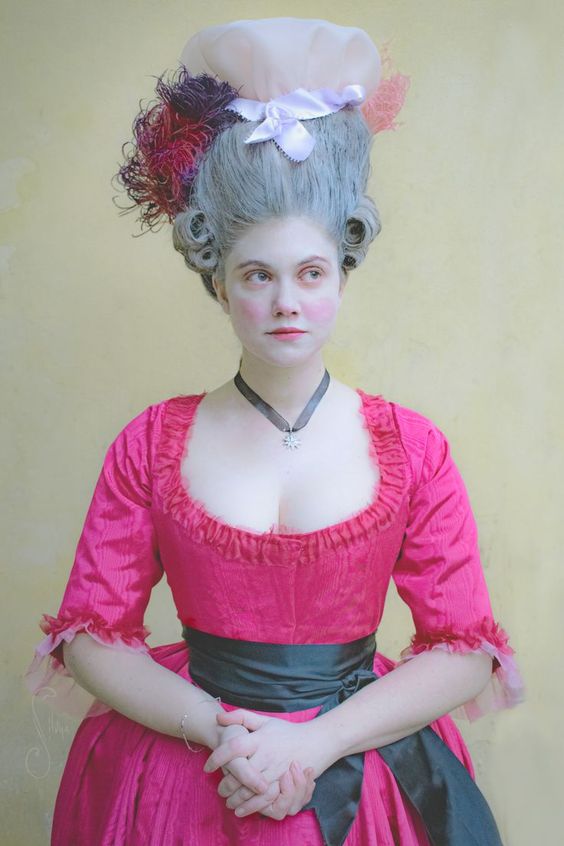
This is one I hear a lot: I put on a pretty dress, I take some photos in a nice location, and suddenly I get a lot of comments about how costuming is a very expensive hobby, about the price some of the fabrics I use must have and all of that. The rude ones, I delete.
My usual reaction is to shake my head and move forward with my life: I do not have the time to explain how costuming can be much less expensive than one thinks, not in a social media comment. And this is why I thought about writing this article.
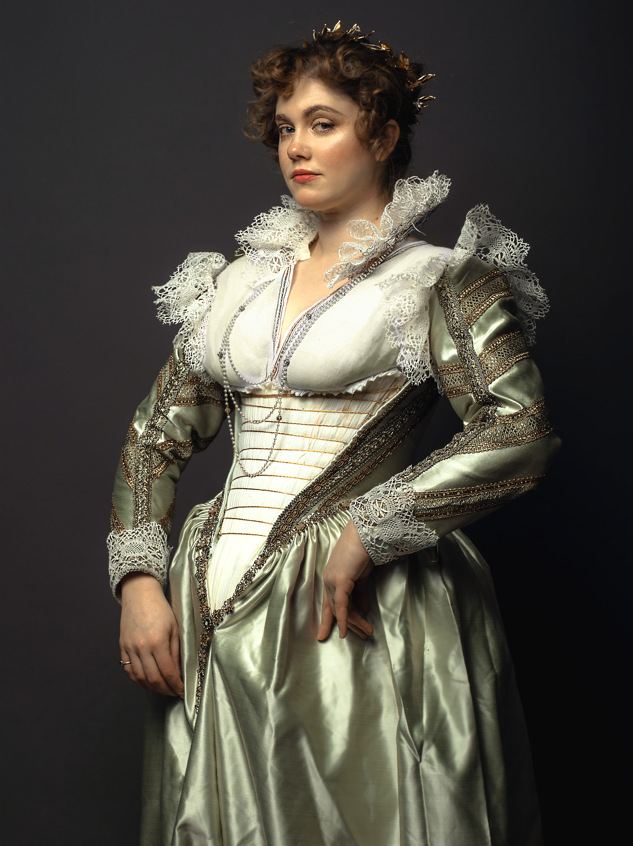
Define Expensive…
First of all, we need to define “expensive”. For me, something expensive is something I generally can not afford, and for someone else it could be something different. It is a relative definition.
So, if it’s relative, let’s compare. Let’s say I want to do pottery. I pay for a course, 250 euros. I pay for the clay, the basic one is 20 euros, but if you want something fancier, you can easily rise. Let’s say 30. You need some basic equipment, a board to work on, sculpting tools and such, let’s say another 30 euros. Then you have to pay for firing (kilns, those are waaaay more expensive than costuming, so I usually go to a lab where they fire other people’s works as well). First firing let’s say 15 euros, to stay on the cheap side. Then you have to glaze. if you’re not a pro glaze mixer, you get the ones that are pre-mixed. 10 euros for very small jars. Let’s add 15 euro for shipping both the clay and the glaze. Then another firing for the glaze. We’re around 370 euros just to have your first mug. True, you will use those supplies for other pieces, true, if you fill the kiln, you pay less. But with pottery there’s always the chance of things cracking and being unusable, which is high, when you’re a beginner.
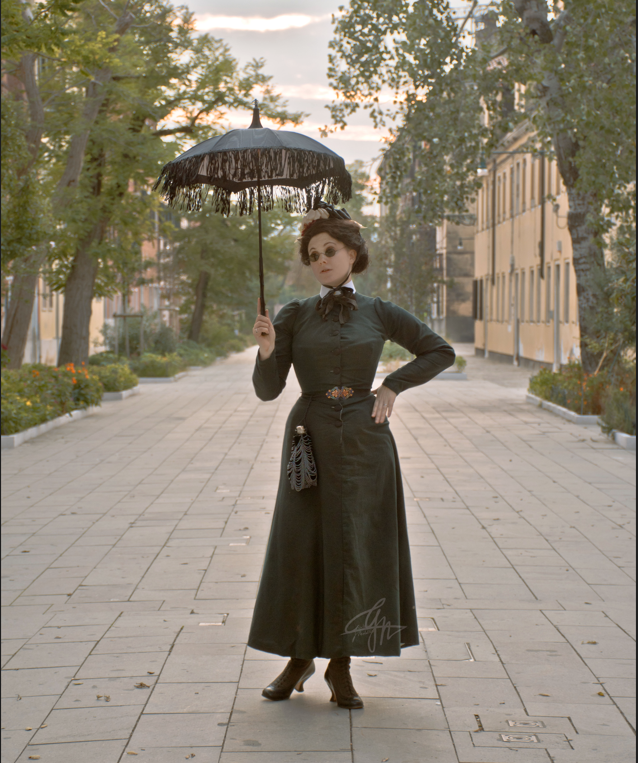
Let’s say you start ballroom dancing. The weekly lessons, the shoes, and sometimes the costumes and the competition fees, if you want to get serious.
Anyway, yes, a bespoke corset costs no less than 300 euros. But…that goes a long way. Longer than 10 kilos of clay. But you can literally make a day dress for the 1890s with less than 30 euros of supplies. You just need patience and luck. It won’t be a fancy one, but if it’s well cut, it will look gorgeous.
I would like to mention that I started doing this when I was a student. I started selling the stuff I made to afford the materials to build the pieces I dreamt of. So I know what it means to be in that predicament. I remember all the optimistic choices: “Oh, this fabric will look just right for this or that!” and then it didn’t. So this is my recipe to keep things on a budget, where to skimp and where to spend.
Where to save the most
This is a tricky one. So far, where I have saved the most, was doing things myself. This means spending only what is needed to make things, and not counting how much it costs to pay someone to do something.
For example, if I need one week to make a dress from start to finish, for a customer, that dress needs to be priced to cover the cost of materials, taxes, and one week of my life. It is my job, I need to sustain myself with it. And any artisan as well. So, if a dress needs a month to make, you need to pay a reasonable monthly wage for a skilled artisan, plus taxes, plus supplies.
If you do things yourself, you can underpay yourself as much as making you work for free. And that is where you get most of the difference in the price tag. Your dress only ends up costing as much as the supplies, and you can make a difference by spending countless hours you don’t have to worry about paying. This is why most makers end up with lavish pieces in their wardrobe: they work on commissions during the week, where they have a clock to look at, and they spend countless Sundays and evenings on the thing they’d love to have in their own closets.
There is a catch though. This game is worth it… if you’re good. If you’re a beginner and need to learn, the cost-benefit ratio and the cost-result ones are not very favorable. Beginners need to try and fail. Failure is the best teacher, but it also means you waste a lot of good stuff you may have found into mediocre resulting things on which you had the highest of hopes. This has been my story, at least. You need experience to know where the good hides and to uncover it, but experience is just the sum of every failure, scam and disappointment you’ve endured.
Some want the good stuff now, not in five years. And to them I have to say that it is cheaper buying from those who’ve already failed.
Invest
The only thing you really need to invest in is a good corset. Durable, comfortable, cut just for you, and that gives you a nice shape. I’m talking about something that increases by at least 50% your waist- hips difference. Let’s say my hips are 100 cm and my waist 80 cm, there’s a 20 cm difference. With a corset, I can comfortably get to 63 cm of waist. I go from a 20cm difference to 37. That is important. With a corset my waist-hips ratio is 185% of what are my natural proportions. I have similar bust measurements, that is important as well. Does your math work? If it doesn’t, it’s time to start thinking about what went wrong. Because you’re not working at full potential and you’re investing your time and energy in something that does not fulfill its full potential. And it’s a pity to work that much for something compromised from the beginning.
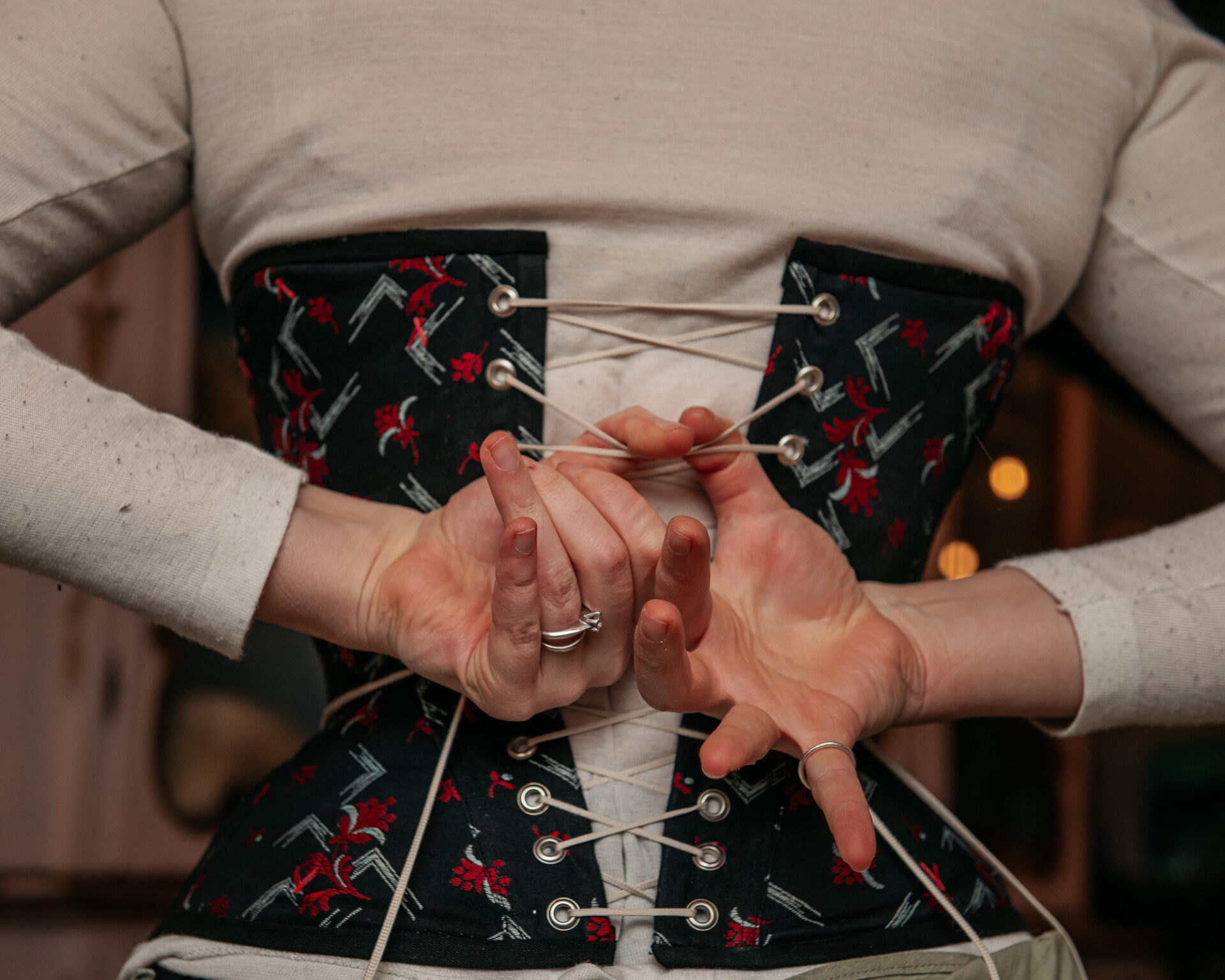
You can pad, but the corset needs to do most of the work. If you pad too much, it looks weird. You can not fake having a good corset by using a bad one and padding. If you can’t see it in the final result, trust me on this one. Padding is an aid, not an alternative.
That goes for stays as well, naturally.
This is the core piece of your wardrobe, you only need a good one for the decade you’re focusing on. Then you’ll want more, but if you’re on a budget, that’s really the thing you can not avoid. If you skimp on the quality of the corset cut, you compromise the quality of the overall work. And instead of spending as a servant to look as a queen, you’ll spend as a servant to look as one. In my opinion, it’s not worth all the time it takes to make a dress. Not that playing the maid or the servant is not nice, but we’re talking about how to look a million dollars on a dime, so let’s aim for the stars.
This is also where I suggest beginners to purchase instead of trying to make. Because a good corset is the thing that can push forward by a mile all your wardrobe, or doom it.
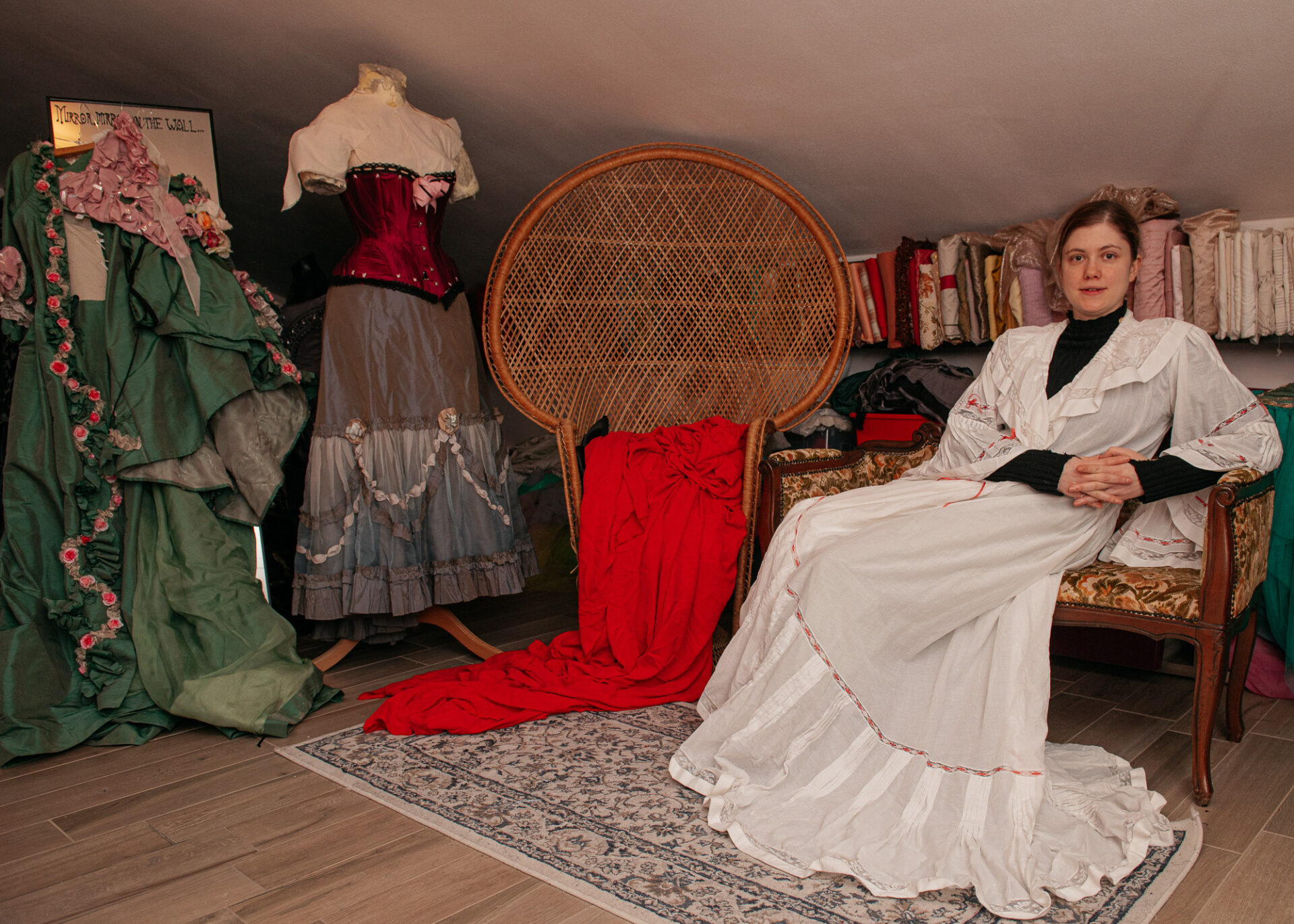
Undergarments
You need them, and this is a fact. Skip a petticoat and you decrease the perceived value of your work by 30%. But do you need a nice one? You can indulge in the most lavish undergarments, but if you’re on a budget… you only need the effect.
I have gone a long way making petticoats from old bedsheets and other kinds of used fabric. You need this fabric not to be limp and to be light, it needs to have some fluffiness, some crispness. Synthetic is good, if it’s what you have at hand. If you manage to get your hands over old synthetic organza curtains, use those. Use plenty of fabric. If your costume includes hoops, the petticoat needs to be rich enough to make sure you don’t see them while moving or when against the wind.
Do you need a chemise? Not really. For years I have just managed by using a cotton tank top. You do need something underneath the corset, to give it a long life and protect your skin, but you don’t really need it to be a fancy chemise.
Do you need bloomers? Nah. Fancy stockings? I have used winter tights for years. Unless you’re planning to show your garters, there’s no need to spend for such a hidden detail.
Footwear
This is also a painful point. Historical footwear is always very expensive and usually you don’t get a nice historical-looking piece by adding budget. You just get a modern shoe that mimics antiques, over a very modern shape. Wide ankles, wrong heels, wide soles. Same heels for the 18th and 19th century, and always the same Louis heel for all the shoes of all brands. All modern shoes are thick and hard, when compared to originals, and to make them fit everyone they’re made on modern lasts (the “mannequins”). And it shows.
In my opinion, indulge in these when you have the rest set, if you feel you want them.
In the meantime? Vinted plus Pinterest is the combo that will keep your pockets, your feet and your costume happy.
You have no idea how many historically-looking shoes you can get for the cheapest prices, if you periodically scout Vinted. Just make sure you keep comparing them with photos of authentic antiques on Pinterest. You will be stunned by how many 1980s shoes can look better than modern ones for the second half of the 19th century, the proportions are there.
And also refrain from going to the open front boot with thirty buckles you can find on so many brands. Go for the unusual. Especially for day footwear for the belle époque, there’s plenty of choice when you look for boots. Getting a pair and having the heel replaced with a more historically looking one will cost a fraction of the price of a new piece that everyone else has. Go for that thing that will make you stand out.
Oh, and last, zippers are not accurate, but they’re not the end of the world. If you don’t brag about the shoes, and lift your skirt, no one will notice, I promise.
Build your stash
Your stash is both your credit card’s worst enemy and best friend.
This is tricky, because it’s the “you need money to make money” kind of thing. But it can be limited and become less and less expensive the more patience you have, and the more you train your eye and your hand in recognizing the “right” fabric for the right project.
Scout fabric shops for the sale corner, especially those shops offering deadstock fabrics. This is really a secret weapon. Diamonds in the dust do exist. You need to have a trained eye and know when to leave and when to buy. I usually feel it in my guts, the regret when I fear I’ll never find that fabric ever again in my life.
Also, deadstock fabric is much better than working with the stuff you can find in common shops. Because it is unique. It may have the right pattern no one else has.
Try to keep your hands off from solid colors. Unless they’re very unusual. When you’re at historical events, you’ll see that most dresses are in solid colors, maybe stripes… you may even find pieces made from the same fabric by different people. It’s not a crime, it happens, but it’s usually a high budget fabric purchased from the sellers everyone buys from, to hide that risk. While if you have a pattern, even a subtle one in the weave, it will look more “period”.
So don’t urge to purchase that silk taffeta in the color you’ve just seen publicized. Not if you’re on a budget. Wait for the right bargain, purchase, and keep aside. Separate the purchases in different times.
Three examples of fabrics I got for a steal, that look crazy expensive:
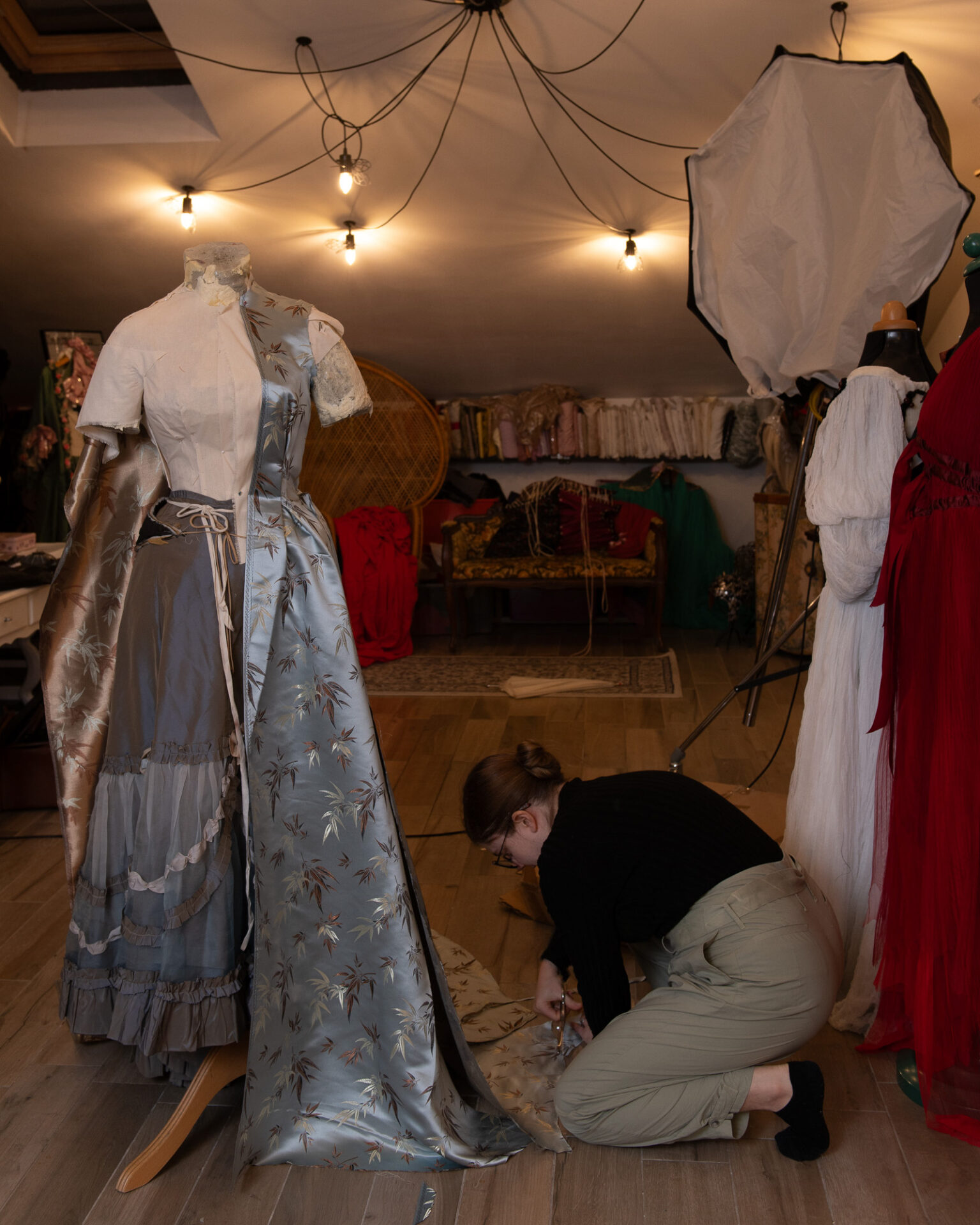
the Penny Dreadful-inspired dress. This fabric is a brocade faille/grosgrain in a lovely silver color. The yarn mimics silk shine very well, and it’s very hard to find as fabric nowadays. The rose pattern is also very typical of the late Victorian period. It is slightly stretch, but by flatlining with cotton canvas as lining, it doesn’t show, as it has a quite firm hand, until pulled. It is also very old, and the stretch of the spandex is not much. It also had some stains I was able to cut off. The price? 4 euros a meter. I got the bolt, and I kept it there until I had the right idea for the design, something that would frame the fabric and make it believable. Using the right fabric for the right project will make it look a thousand dollars.
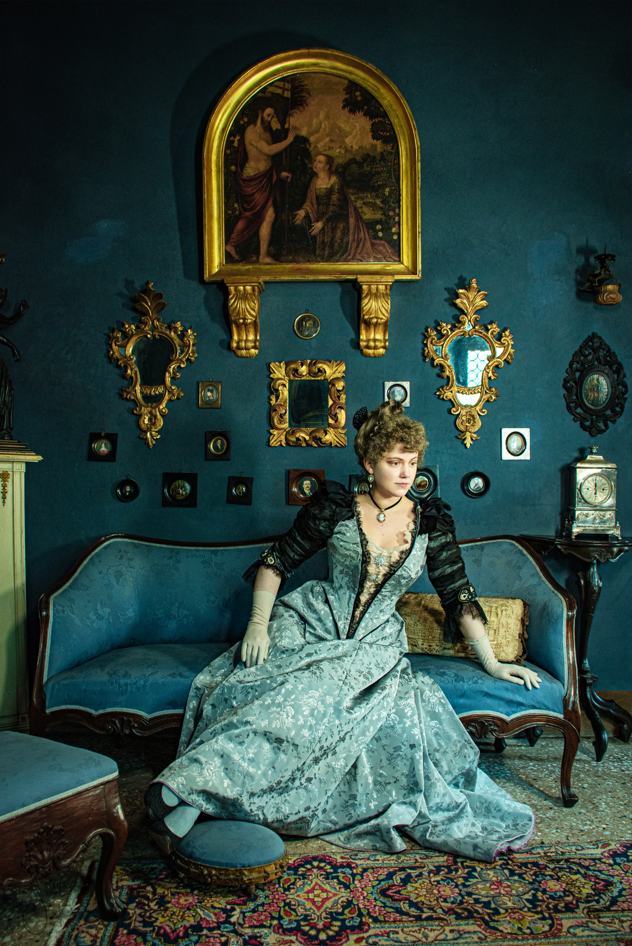
the pearl butterfly dress: I didn’t have the plan for this dress, only the dream, because I thought the silk duchesse it needed, and in the needed amount, would have been off budget for a decade, for me. But I happened to stumble upon a remnant of a vintage curtain satin, in a rayon-cotton blend. It was thrown there, double height. No one wanted it. I saw it, I felt it, and it came home with me. The price for all the satin? This is a full circle skirt. With a huge train. All the fabric was 8 euros.
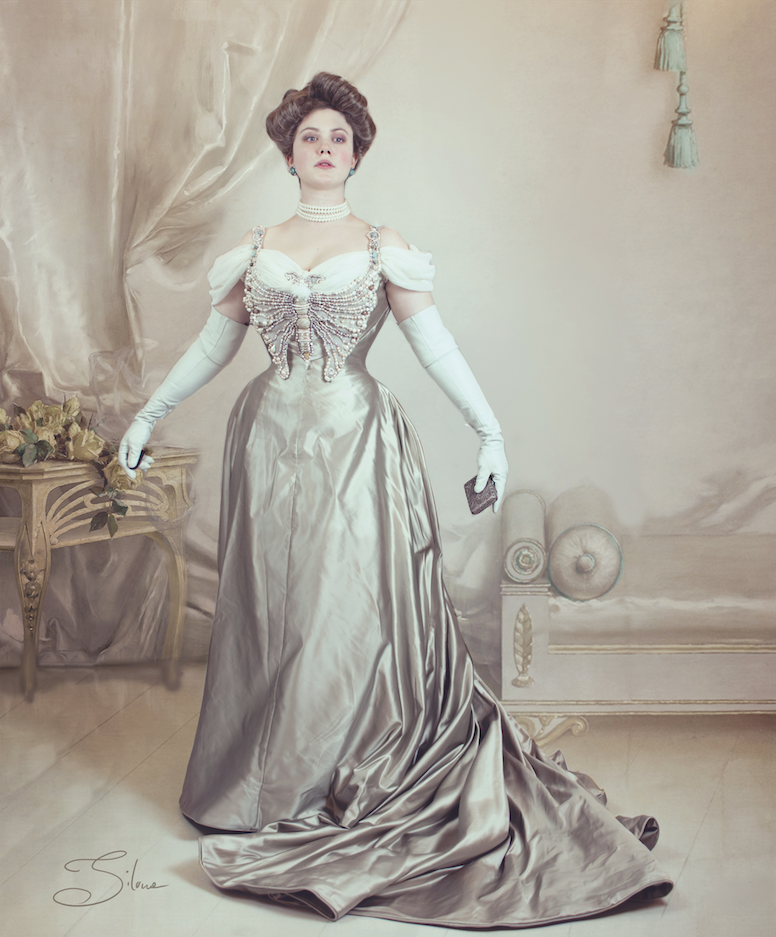
The red broken mirror dress: “is it silk?” i am often asked. Its’ not. It’s a synthetic twill with red and black yarn, which gives it the iridescence of silk taffeta. I also flatlined certain areas to keep it with the needed structure for such illusion. The price of the fabric? 2 euros per metre. I brought the bolt home, and made the dress by using all of it, literally shaping the skirt and sleeves to use all there was. 13 meters, I think it was. Then it needed a huge amount of work to make it into a dress, and the crystals and the sequins and the foundation bodice and all of that. But the fabric was not the expensive part. It was expensive because of the amount of work I put into it.
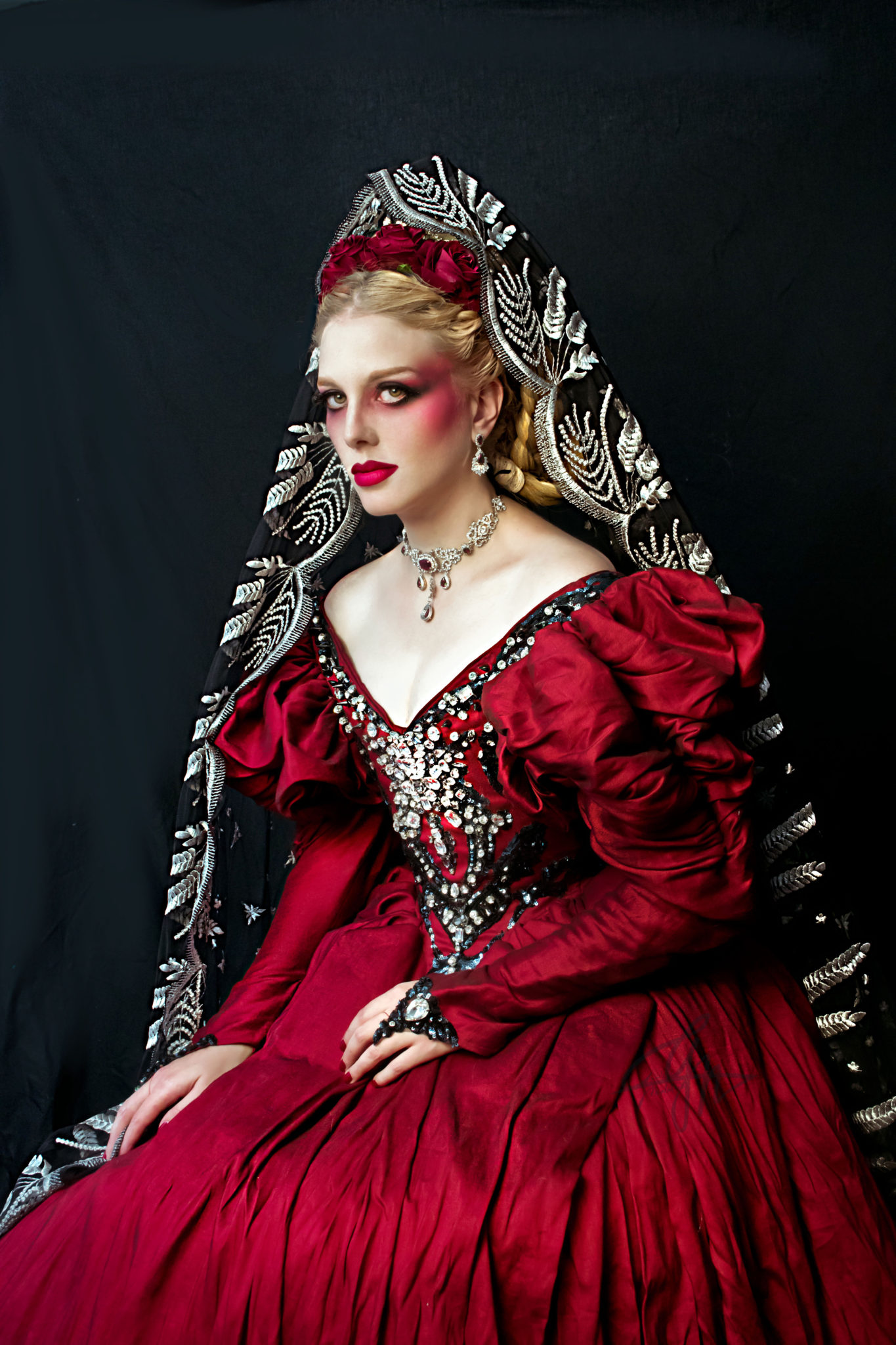
Be flexible
Flexibility is cheap, needing “that specific thing” is bloody expensive.
This is the secret. It’s cheaper to find a fabric and then to build a project around the perfect lucky find, than thinking of a project and then finding the right fabric. It always is. And it is why historical costuming can be much cheaper than cosplay. At least it is for me. When I don’t have to pair an exact color and weave.
Of course you need to be able to wait for the right print, the right shade, the right fabric hand, and not force things into projects just because of enthusiasm. This is something you need to train. Unfortunately most of it comes from experience, and mistakes. And you need to make those, in order to learn how to choose wisely the next time. But if you’re in doubt, that’s a no.
Also, cheap polyester satin does not work. Ever.
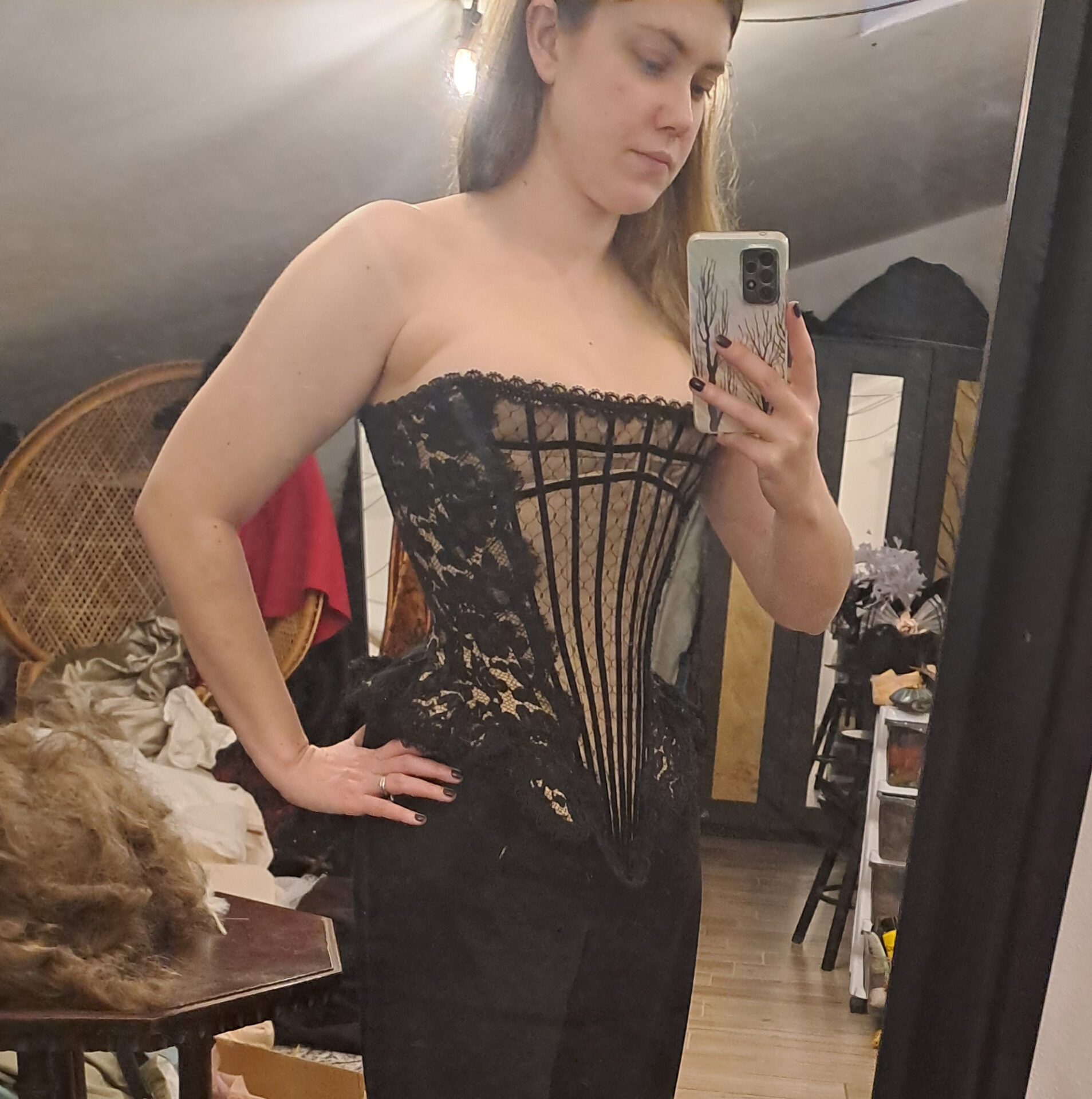
The cut, the cut, the cut. And the proportions
I say this a lot. And every time I find people nodding. Then I look at what they do, and I see they did not really understand.
Cut is important. And if you’re trained to use modern pattern-drafting methods, you need to take everything you thought to be your foundation with a grain of salt. All lines in period pieces are curves. The waist is rarely a straight line, and it moves up and down more than you think. The point where the sleeve starts on the shoulder moves a lot with different styles. You do not add extra ease to corsetry as you would to a dress or a jacket.
Your best friend is photoshop. But not to alter your photos. Try to place your photo with the dress or mock-up on you, next to original images of the same time, or photos of antique dresses on mannequins. Where are the lines placed? Is it the same height, the same curve?
And no, they were not different from nowadays enough for this not to work. If you keep using that to cut yourself a slack, you’re closing a road to improvement, and you’ll never reach what is at its end.
Overlay the images, try to take your own photo at the same angle the original was taken. Do the two meet? Where do they differ the most? Highlight the lines of each panel, see if they match.
I do this mostly by eye, but I have found it very effective when I need to make someone “see”, when they don’t have a trained eye. Do it, even if you feel confident. I still use this technique to check my work and see where I can improve, and no matter how much experience I have, how nice my work can look, I always find something new to learn.
This will make your dress look real. Or good. Or better every time. The more severe you are in this phase, the faster you will improve.
A well cut dress will always look better than a poorly cut one made with expensive fabrics. A cheap cotton cut properly will look much more expensive than a nice silk cut poorly. The better you are at cut, the more expensive your dresses will look.
Mock-ups
You think this is extra fabric you can not afford. You think you have no time. You hate doing them. I know. But it really shows, if you didn’t do one. This is where you test the cut, where you fine-tune. Use old bed sheets, ask them to your friends and relatives. Give them a good wash in bleach to make them hygienic, and use them. You don’t always need to do a mock-up of skirts, but bodices are always a need. And if you are a beginner, there’s so much you can learn from mock-up skirts. You can even make them in the cheapest cotton calico you can find, and use it as lining. I reuse the pieces of my mock-ups, by cutting other mock-up panels, until I have completely worn out the fabric. Also, optimistically purchased fabrics that I will not use end up being used for this task.
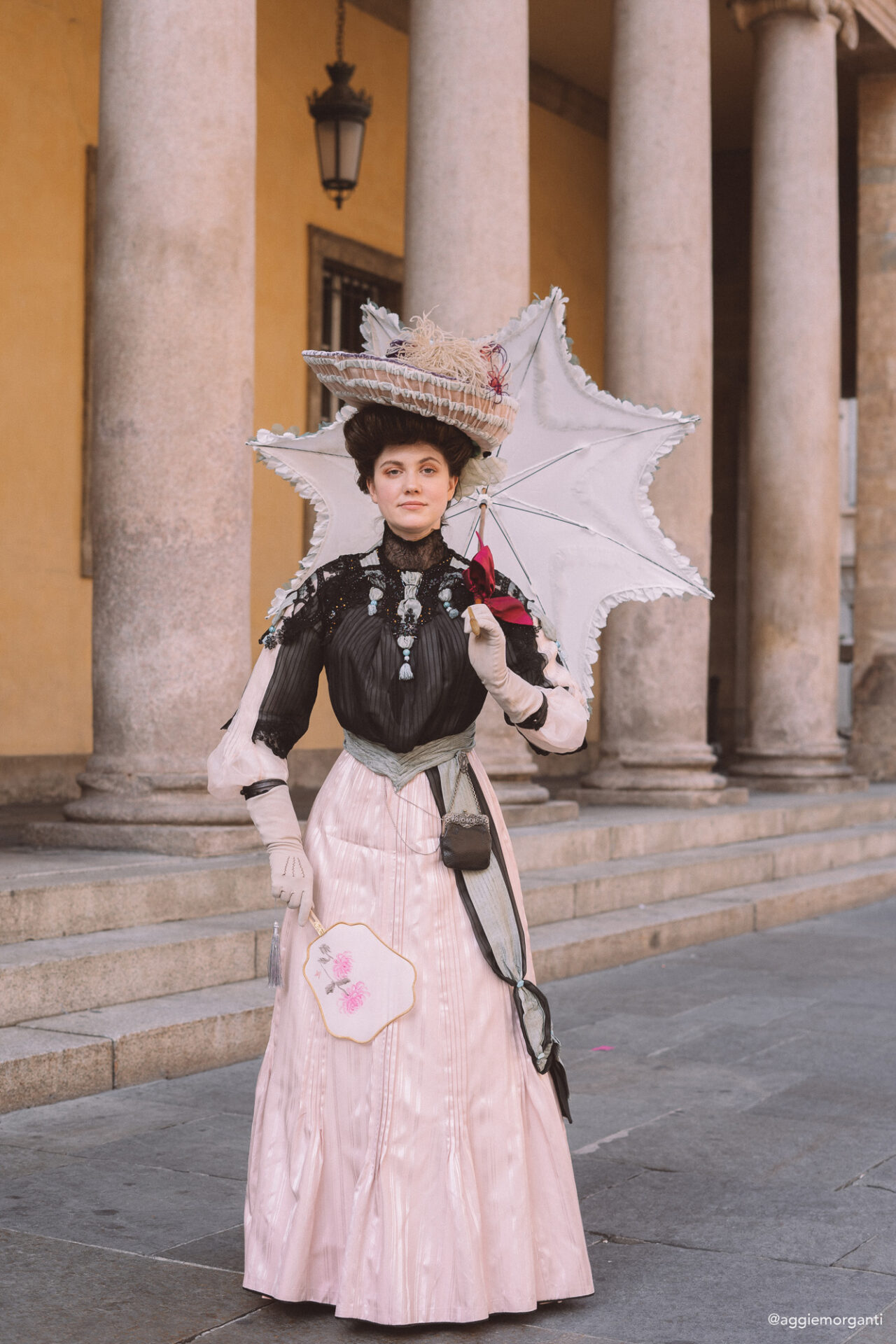
Remake, fix, adapt
You will tell yourself you don’t need to fix that old dress, because you’ll do another, new and better. It is always like this.
The truth is that there’s a lot to learn in fixing, improving and adapting. Adding creative panels, trying to make them fit the taste of the era. It is what they did, and that is how sometimes you achieve some very period-looking effects. Take this outfit for example: it is the third bodice that lace collar thing has been sewn to. Third and a half. It went from 1892 to 1895 to 1904. I changed the shape of the belt every time, and I need two attempts to get the volumes and proportions right on the last version. But I will always know what to check from now on. If I did a new piece, I would have learnt less. Your mistakes are your best teachers.
Train your eyes for the extra detail
Every dress needs a focus point. You don’t need to overlay everything in antique lace or embroidery to make it good, if it is well cut. But you do need a focus point, a detail, some embellishment. Maybe a nice collar? Maybe a beautiful draped detail. This is another weak point of many recreations: too much or too little, and nowhere for the eye to focus.
This looks like a complaint, rather than a tip. I know. But the thing you can take with you, is that a clever idea makes a dress look more expensive than an expensive fabric. If you are the one dictating where the eye of the viewer goes, you can invest in enriching that spot only. The right appliqué, the right chenille pompon, the right old ribbon you found in your granny’s sewing box.
Consume your eyes on Pinterest, if books are out of budget. Look at how each piece is finished, look for images of the insides, keep looking at groups where they sell antiques or auction houses, even ebay, not so much to buy, but to see the closeups you would never see elsewhere.
You need to put your aesthetic taste to diet: it pulls out what you feed it, so you need it to look at original stuff. Stop taking inspiration from non-antiques.
Also, people wearing antiques are not a good reference. If their measurements match the ones of the garment, it doesn’t necessarily have the right proportions and the pieces are rarely worn with the right undergarments. So everything is staggered. It is not solid ground to base your work on.
Make it personal, create your character
This is much needed to bring together everything, with the accessories. You need to find you.
What is my character? An extravagant artist, probably an actress, dancer or singer. She knows how to use contrasts and exaggeration to stand out from a crowd.
It is a series of layers of things that need to “click” to get that lavish effect. An expensive commissioned hat, badly paired with a poorly made outfit, will not fix everything. It is not about the single thing that will make your work look more expensive than it is, it is when all things align.
And it’s a journey. Nobody has arrived. We all go at different speeds, and we are at different spots, but we’re all moving in the same direction. There’s always more to do, to learn. But it is important to keep things at the same level. Why is your character wearing that hat? Why that color? Going beyond the “it was pretty”, will build that credibility in the final work, that makes the viewer think “it looks authentic, so it is probably very expensive!”.
In the end, the choices you make matter more than the money you can spend. Wonders can be done with less than 70 euros of materials for the whole outfit. The experience and taste of the person making the choices matter a lot.
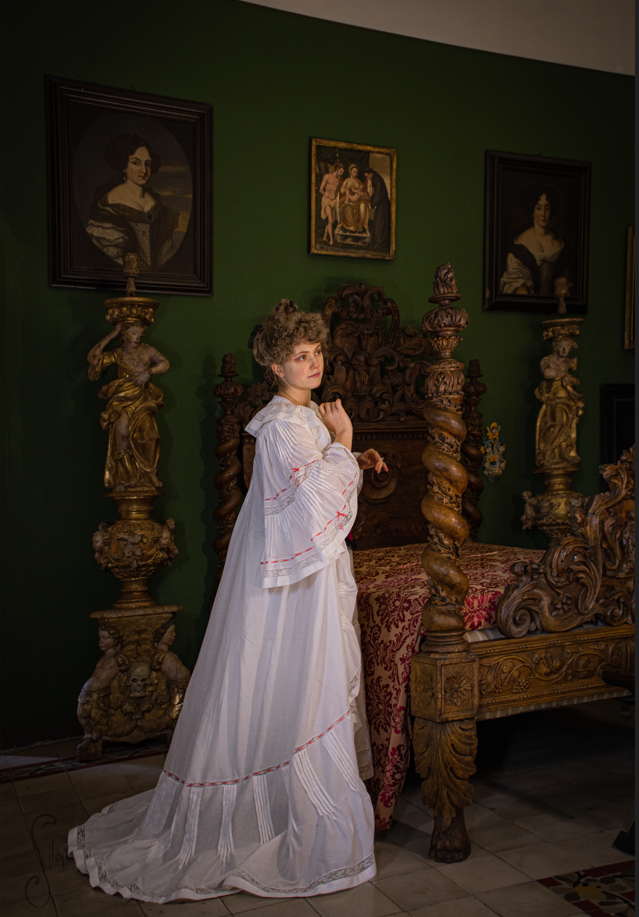
Attending events
This is another step. I have found that many people from abroad who started following me not long ago, assume I am extremely wealthy because I attend events in Italy.
Well, I do live here. I only went abroad for historical events twice, and I’ve been doing this for more than a decade. One in Belgium, and we went by car, and one in Versailles. I had to save for a while to finally attend the second one, and I don’t plan on doing it any time soon. I am still not sure it was worth the cost of everything.
Yes, parties during Carnevale can be expensive. But the whole year you can find walks and free events to join, there are so many picnics for every era that I have lost count. You just need to connect with people doing this already. And if there’s nothing, you can start yourself, in your area, as we did with Reverie for the belle époque.
A few hours of train or drive may be needed, but you don’t necessarily need to dine at an expensive restaurant. You can enjoy this as a hobby while keeping it on a budget.
At these events photos will be taken, and you’ll probably be shown nice locations that allow you to feel transported into another time.
Anyway, seriously, you can do it. You can start historical costuming on a budget, and there’s all you need to do it pretty successfully even without breaking the piggy bank. The internet is full of tutorials, videos, advice, you can go very far.
You just need to keep your aesthetic taste on a rich and healthy diet and to keep looking for things to improve. The rest will come.
You will want to spend more. You will see people purchasing things you’ve dreamt of, but could not afford. This does not mean you can’t get to look like you imagined. If you have time and skill, those go a long way, in replacing money.
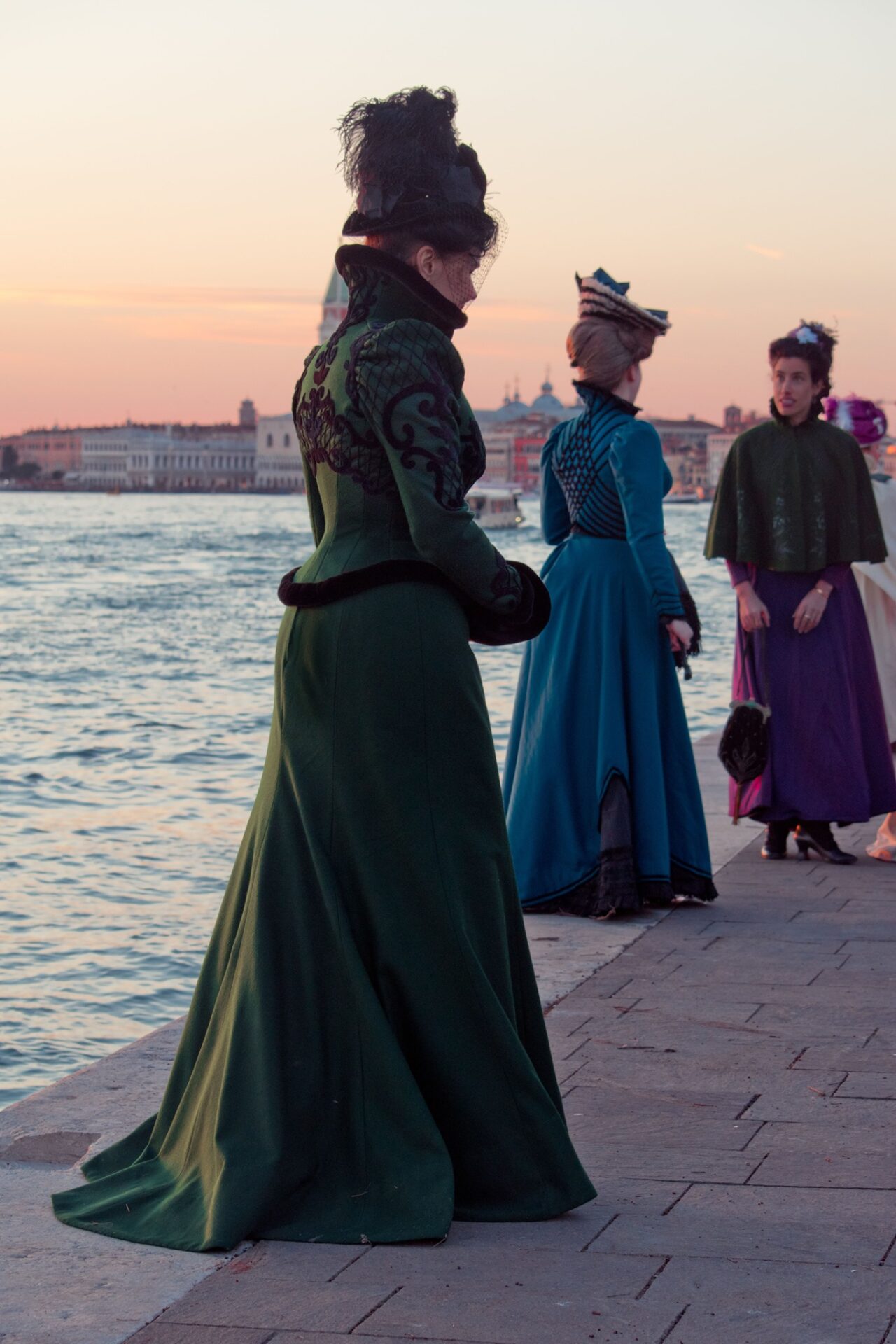
Images by Siluna Portraits and Agnese Morganti. Among the models: Merja Palkivaara and Delia Guglielmi.
Some of these were taken in the Ugo Da Como Residence.





